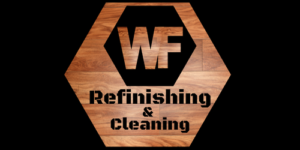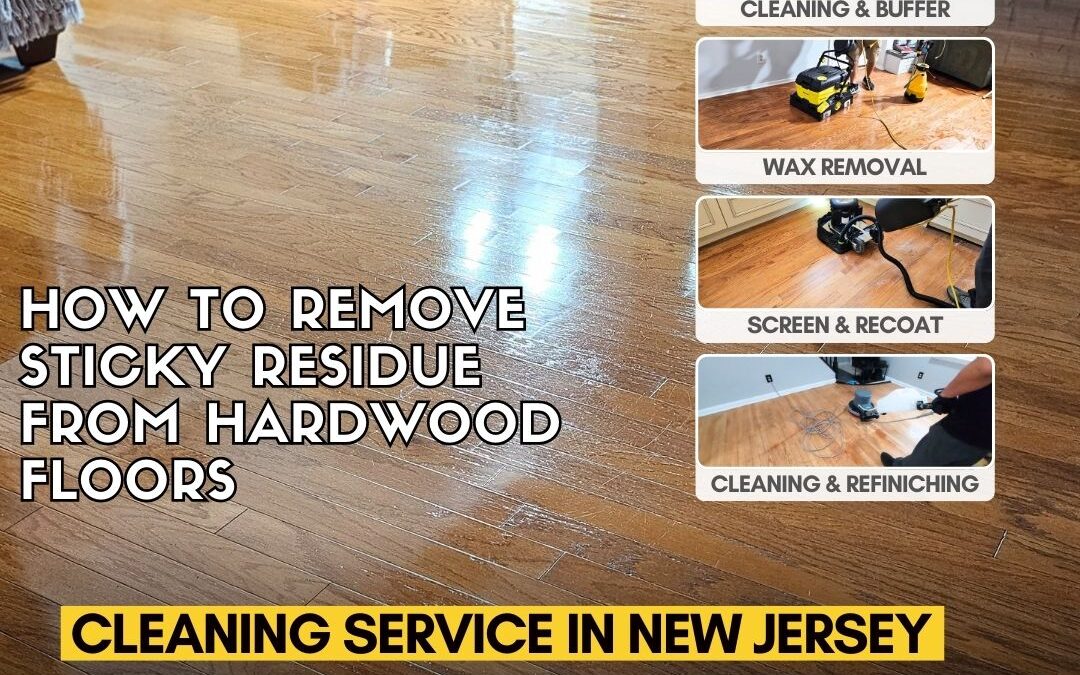Eliminate Sticky Residue and Haze from Hardwood Floors with These Simple Solutions
Eliminate sticky residue and haze from hardwood floor. Whether it’s from cleaning products, spills, or natural wear, this residue can leave your wood floors hazy and unattractive. Here’s how to restore the shine and eliminate that sticky feeling.
1. Identify the Cause of the Residue
Sticky residue can come from a variety of sources. Common culprits include:
- Cleaning Products: Using the wrong cleaner or using too much product can leave a film behind.
- Spills: Sugary drinks, oils, or adhesives can cause build-up.
- Wax: Over time, waxes and polishes can leave wood floors looking hazy and sticky.
2. Cleaning Methods to Remove Sticky Residue
- Vinegar and Water Solution: Mix equal parts white vinegar and warm water. Dampen a microfiber cloth in the solution and gently wipe the floor. Be sure not to saturate the wood to avoid water damage.
- Baking Soda Paste: For more stubborn residue, create a paste using baking soda and water. Apply the paste to the sticky areas and gently scrub with a soft cloth. Wipe the floor with a damp cloth afterward.
- Specialized Wood Floor Cleaners: Use a cleaner specifically designed for hardwood floors. Follow the manufacturer’s instructions for the best results and to avoid damage to your floor’s finish.
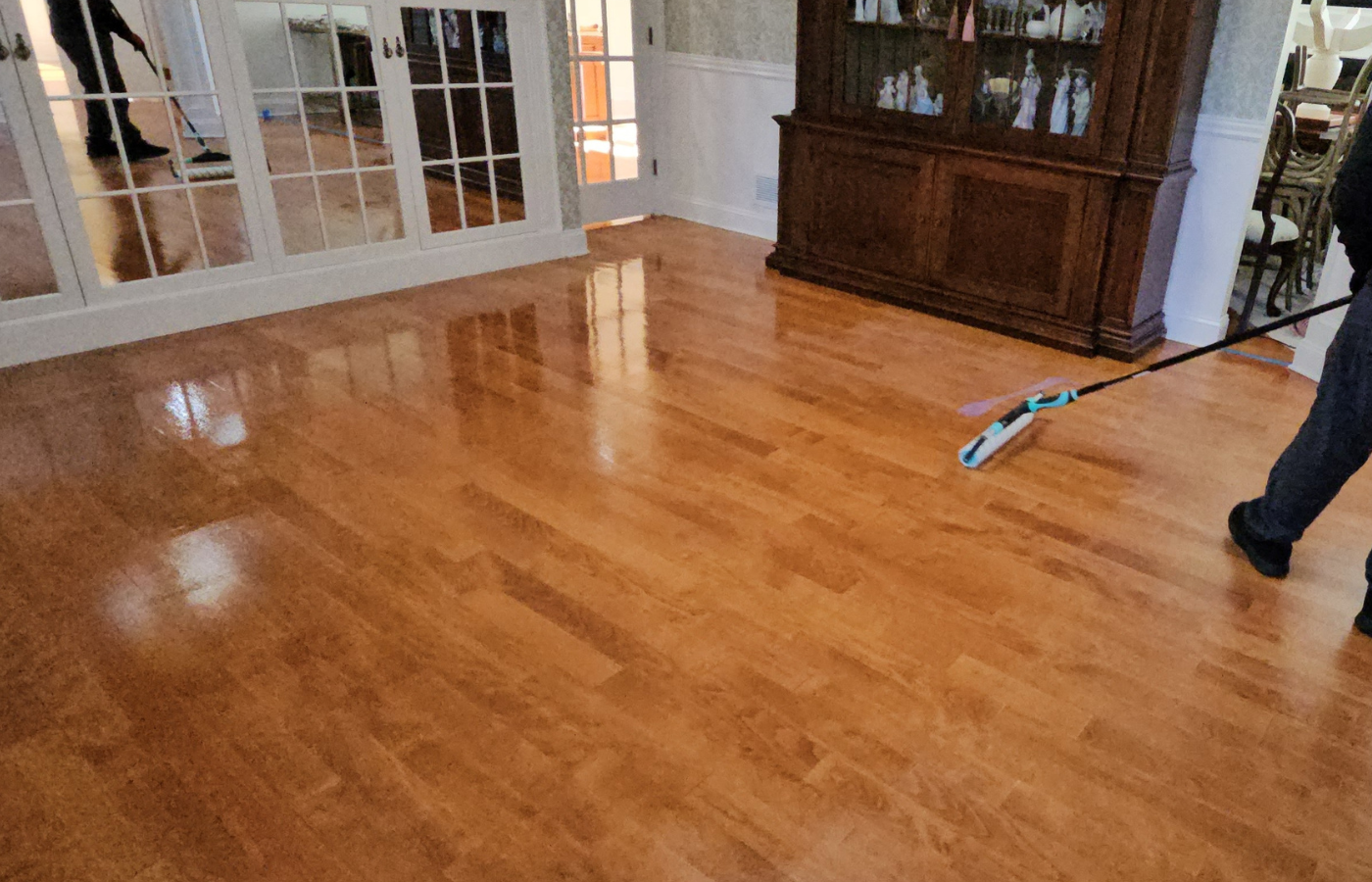
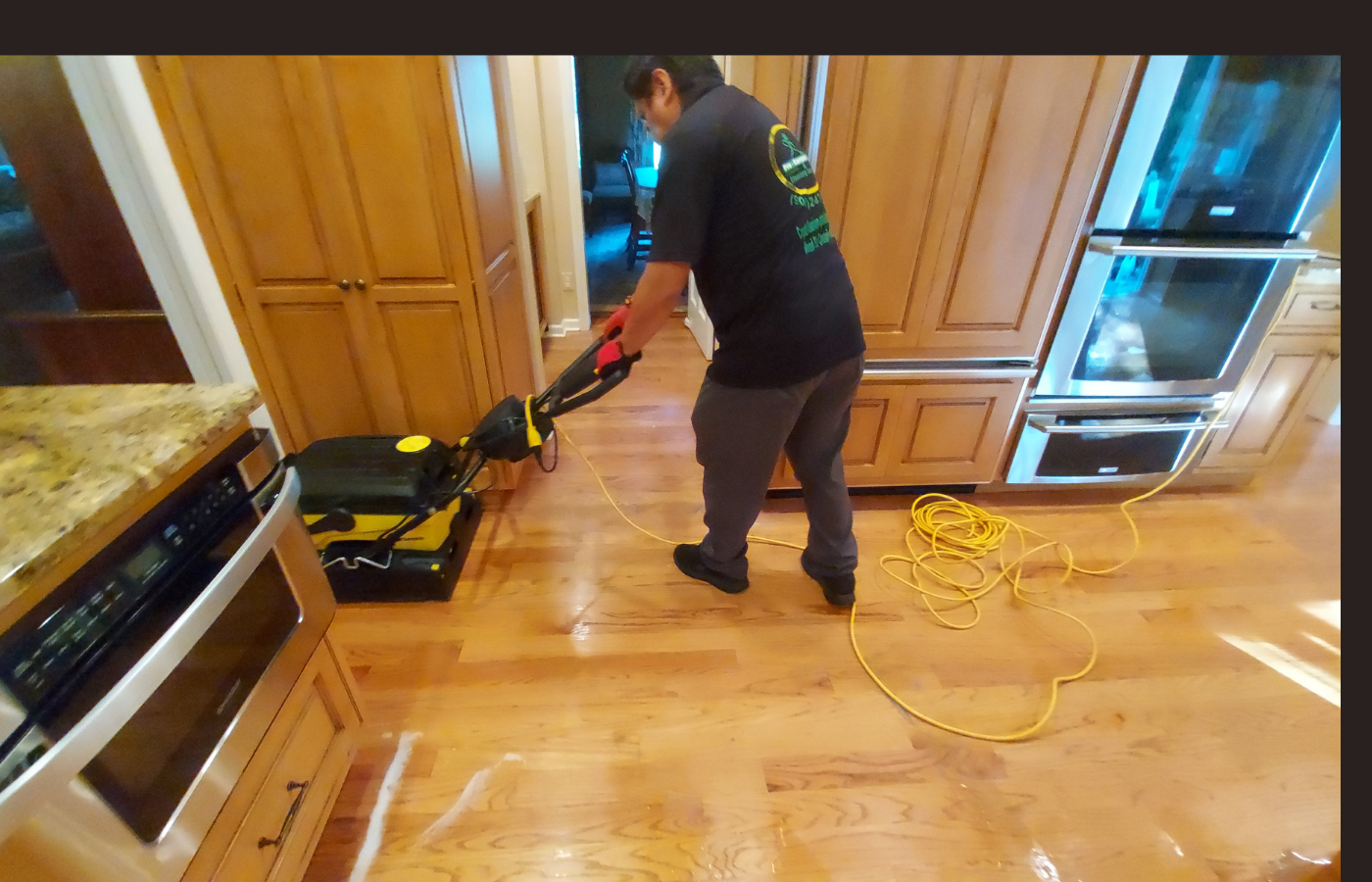
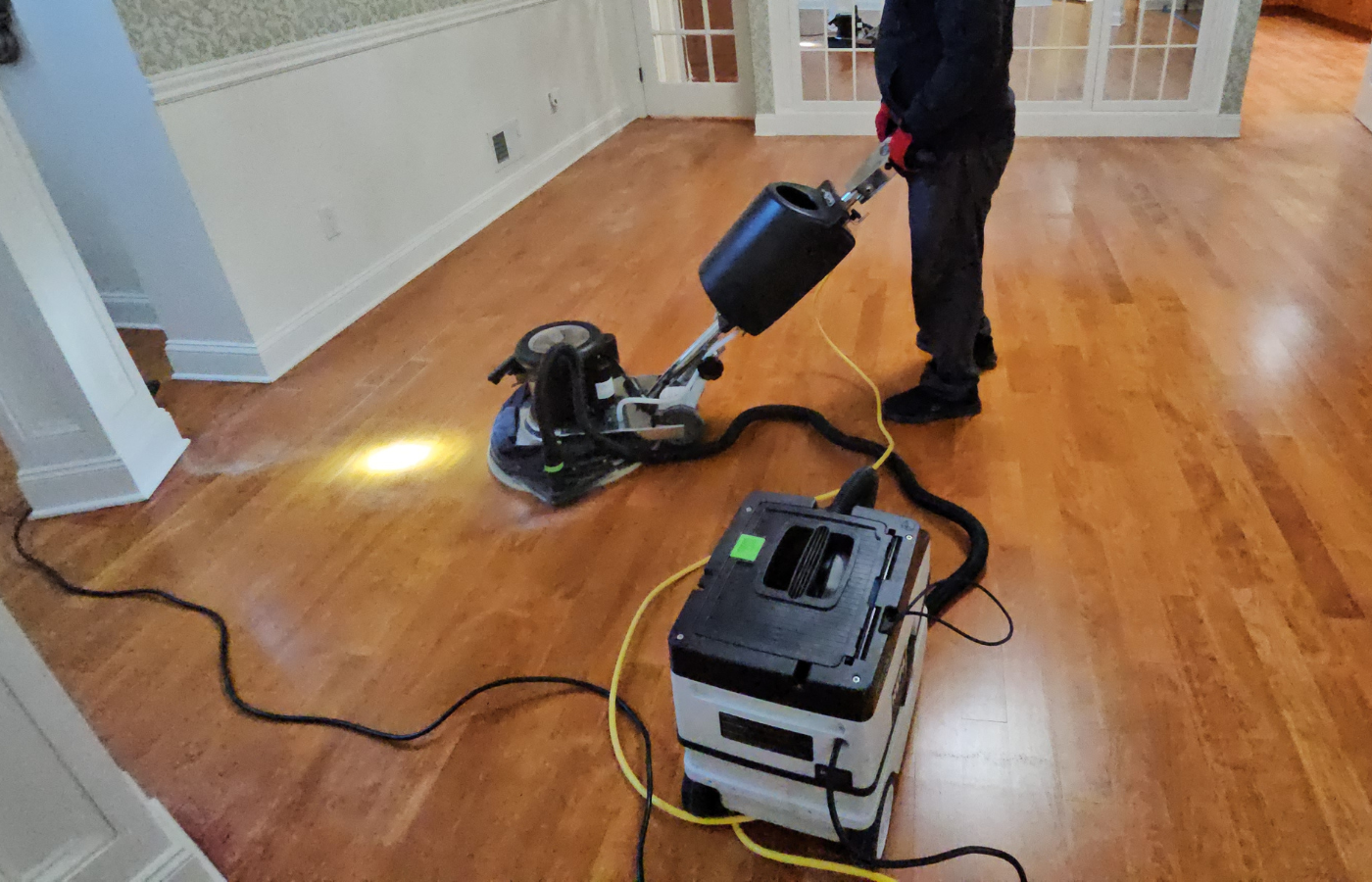
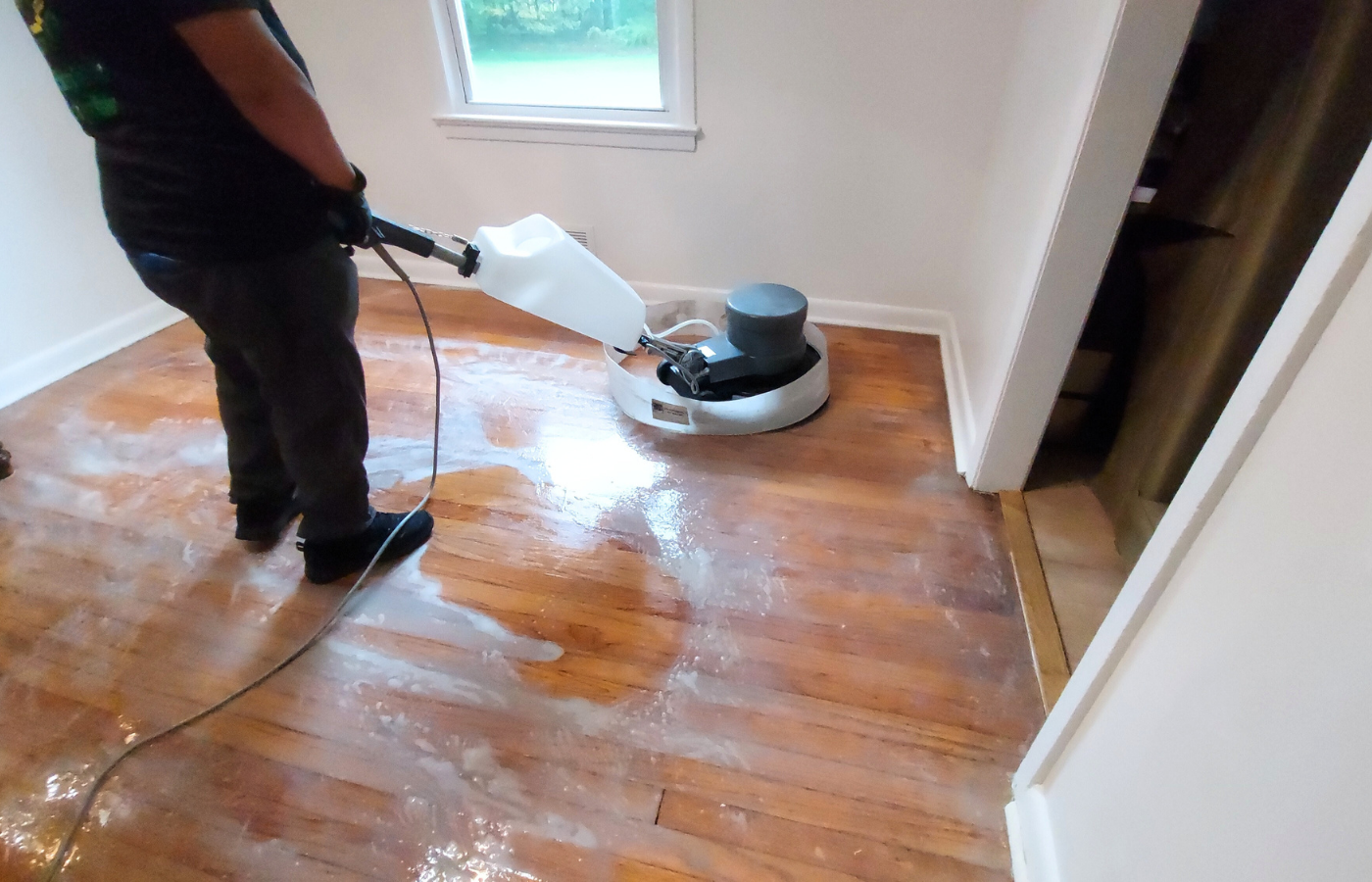
How To Prevent Sticky Residue on Hardwood Floors
Preventing sticky residue on your hardwood floors is just as important as removing it. Proper maintenance will keep your floors looking clean and feeling smooth.
1. Choose the Right Cleaning Products
Avoid harsh chemicals and waxes that can leave a sticky film behind. Opt for cleaners that are specially formulated for hardwood floors and always follow the instructions.
2. Wipe Spills Immediately
Spills can quickly become sticky if left to sit. Wipe them up as soon as possible using a soft cloth and a mild cleaning solution to prevent them from leaving a residue.
3. Regular Maintenance
Dust, dirt, and spills can accumulate over time and cause haziness. Regular sweeping, vacuuming, and mopping with a hardwood-safe cleaner will prevent residue build-up.
How a Professional Company Can Help
While regular maintenance can go a long way in preventing residue, professional cleaning services are essential for deep cleaning and maintaining the beauty of your wood floors. Here’s how a professional company can assist:
- Expert Knowledge: Professionals understand the specific needs of hardwood floors and can select the right cleaning methods and products.
- Deep Cleaning: Sticky residue can build up over time, and a professional service will provide a deep clean to remove even the most stubborn hazy films.
- Proper Equipment: Professional cleaners use advanced equipment that ensures a thorough clean without damaging your wood floors.
- Long-Lasting Protection: By having your floors professionally cleaned, you help preserve their finish and protect them from future damage.
Regular professional cleaning not only restores the shine of your hardwood floors but also extends their lifespan, keeping them free of sticky residue and haziness for years to come.
Floor Cleaning Topics:
- Steam Carpet Cleaning -Summit NJ
- How to dry carpet after cleaning
- How to get rid of odor in carpets
- Basement water damage -steam carpet cleaning
- Lear how to clean wood floor
- How often should I clean my carpet?
- Best Homemade carpet cleaner
- Hotel Carpet Cleaning
- Our Expertise in High-Traffic Areas ( Hotels, Apartments buildings…)
- Expert Commercial Carpet Cleaning Services
Is it better Shampoo or steam cleaning?
Steam cleaning stands out as a supremely effective method, owing to its advanced technology and integrated machinery. Moreover, the infusion of hot water and cleansing agents ensures a swift and thorough penetration into upholstery, surpassing the efficacy of traditional shampooing techniques.

General Questions
How expensive is Clean & Recoat?
Prices will vary but typically a contractor will charge you less than what they would charge you for sanding and refinishing the floor. Pricing will depend on how much time they spend cleaning a floor, the type of finish they use and the number of applications of finish they make. Get several estimates but pay careful attention to how long they will take, how they will prep the surface and the type of finish they will use. Learn More…
Is this a dusty, smelly process?
The smell of the chemicals used to clean the floors is comparable to typical household cleaners and are not toxic or hazardous. The buffers we use have dust containment systems attached to vacuums to minimize any dust from prep work. We only work with waterborne urethanes that have no offensive odors. Done correctly, Clean & Recoat is the least invasive recoating process on the market today.
How log will a Clean & Recoat last?
With proper care and maintenance and by following a common sense approach to reduce wear and damage, a floor that’s been recoated can give you years of excellent service. I’ve seen floors that I recoated more than ten years ago that are still in very good shape. Most floors that are being recoated will be getting a waterborne finish and these finishes are very good and easily maintained. Learn More…
What is Laminate Flooring?
Laminate flooring is a tongue and groove interlocking flooring system that comes in either planks or squares. All of these floors have a wear layer, a decorative print film layer, an inner core structure, and some type of backing support layer — usually melamine. The print film layer is either fused or glued to the inner core. The print film can be a photo of any real floor. The earlayer is applied to the decorative print layer to protect the pattern. Melamine resins are the main component of the wearlayer. The melamine surface gets its incredible durability from aluminum oxide. Aluminum oxide is almost as hard as diamonds and provides unsurpassed wear and stain resistance. Learn More…
What is Engineered Flooring?
Engineered flooring is produced by bonding three or more layers of wood. The crossing of grain direction within the boards makes this a very dimensionally stable product able to resist nearly all expansion and shrinkage from normal moisture changes. This is one primary feature that makes it suitable for use directly on concrete and below-grade application. Learn More…
Will my floor age or change color?
Yes. You can expect to see shade differences in your floor over time. The cause is usually from exposure to the ultra-violet rays of the sun, whether direct or indirect. This color change will be more noticeable in lighter colors, which will darken over time. In addition, certain species like Brazilian cherry, will naturally darken over the years. These changes are due to the natural characteristics of wood and are not covered by most manufacturers’ warranties.
What is Custom Finishing?
Sanding and refinishing performed to individual specifications. Custom finishing of wood floors is performed in the home on the completely installed new floor, or to refurbish a previously finished floor. Custom finishing permits the owner to select from a full range of stains, sheens and colors.
